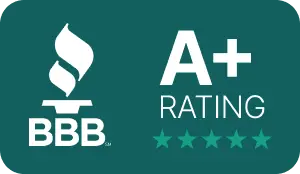When an executor’s calendar and the court docket move at glacial speed, waiting for probate to close can feel endless. A probate-or inheritance-advance compresses that wait from months—or years—into days. Below is a realistic timeline, the bottlenecks to watch, and the leverage points that shave hours off every stage.
Day 0: The Pre-Call Checklist
Speed begins before you ever dial a funding company. Round up the death certificate, letters testamentary (or letters of administration), the latest inventory, and the executor’s contact details. Having those core documents in hand positions you for same-day underwriting instead of a back-and-forth scavenger hunt.
Day 1: Application to Conditional Approval (4–6 Working Hours)
Direct-to-Lender efficiency. Submitting your file straight to a balance-sheet lender instead of a broker removes a full layer of hand-offs. Underwriters confirm estate value, verify debts, and clear title in a single pass—often within one business day. By contrast, brokers queue files for multiple lenders, adding idle time. Choosing the more streamlined direct-lender route keeps the clock on your side. See how the right partner accelerates funding.
Day 2: Disclosure Review and Q&A
Once you receive the draft agreement, walk through the repayment cap, dispute-resolution clause, and lien release language. A fast close never means skipping due diligence—moving quickly only pays off if you avoid hidden fees or unfavorable terms. Run the offer through the same ten-question smell test seasoned heirs use to surface red flags before signing. Here’s the checklist that protects speed without sacrificing safety.
Day 3: Final Approval and Wire Scheduling
With disclosures signed and executor cooperation confirmed, most direct lenders lock final approval in 24 hours. Wire timing for large advances—think six-figure payouts used to buy a sibling’s equity or pay estate taxes—may add an extra compliance review, but disciplined lenders still close within three business days. The key is aligning wire size with the estate’s net value so underwriting doesn’t trigger a second round of appraisal. Understand how wire amount affects timing.
Day 4: Funds Disbursed—But How Does Cost Track to Speed?
Faster isn’t free. Non-recourse advances charge a flat discount; probate loans accrue interest; personal loans tag your credit and add origination. Comparing the total cost of each option—especially if a two-day difference is the only perk—prevents sticker shock six months later. Weigh timeline benefits against the full cost breakdown of advances, probate loans, and personal loans before green-lighting the wire. Know the real price of shaved days.
Day 5+: When Real Estate Complicates the Calendar
If the advance hinges on inherited property—say, pulling cash to renovate before listing—expect title work, hazard-insurance verification, and sometimes court approval of the lien. Those steps can add two to five business days. Comparing the estate-loan framework with a post-probate mortgage highlights where additional delays lurk and how to plan around them. See why property-backed deals run a different clock.
The 5-Day Fast-Track Recipe
- Collect core documents before applying.
- Submit directly to a balance-sheet lender—not a broker.
- Use the ten-question filter to approve terms in one pass.
- Align wire size with estate valuation to avoid re-underwriting.
- For real property, pre-order title and insurance docs.
Follow those steps and most heirs see funds in their bank account within three to five business days—faster than the post office delivers many probate notices.
Bottom Line
Timelines vary, but control lies largely in your preparation and partner choice. The heirs who fund fastest are the ones who treat document gathering like a sprint, pick a lender with direct decision-making authority, and vet terms with disciplined questions—all before the first wire is scheduled. Move that efficiently, and probate’s long wait suddenly shrinks to less than a work-week.








